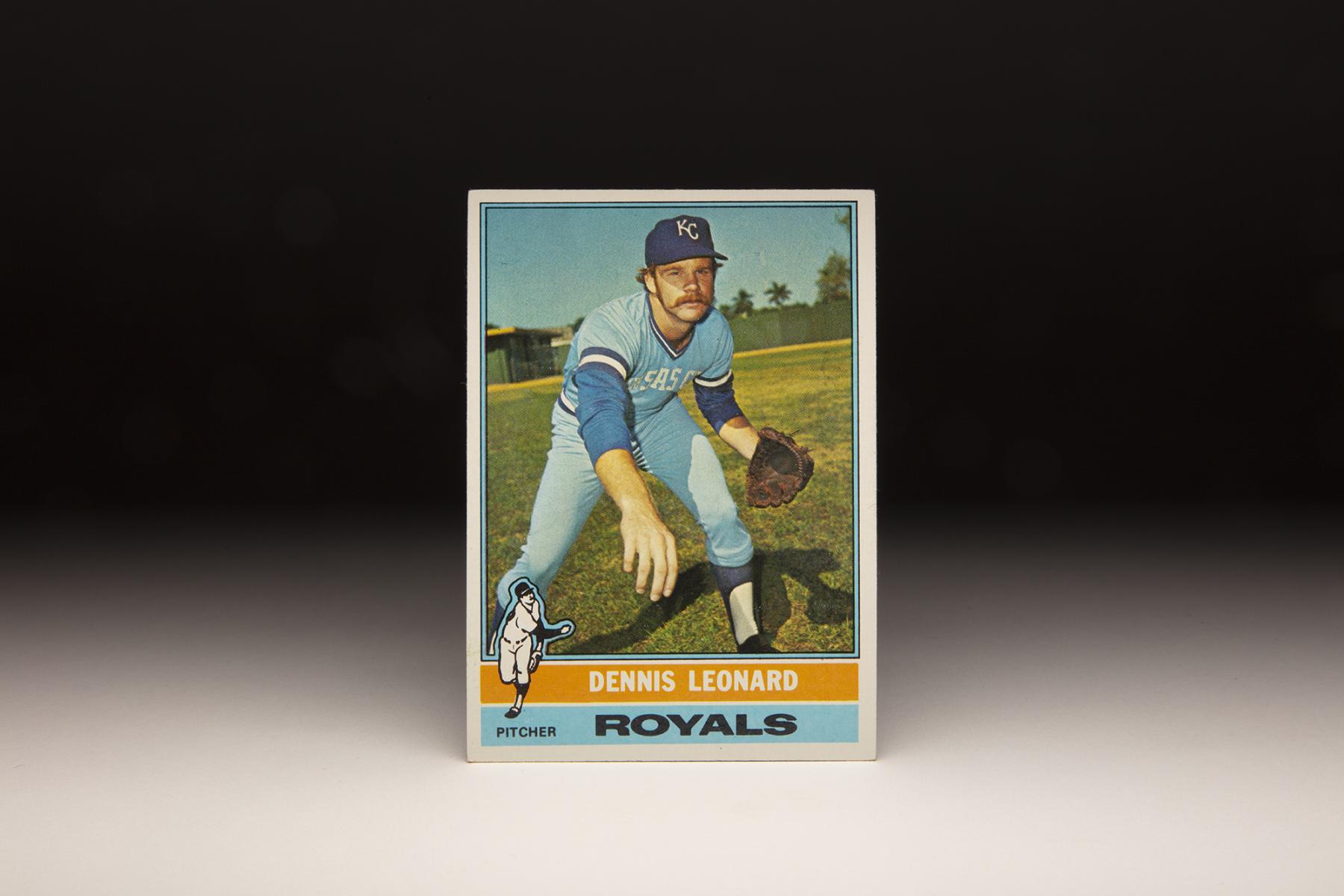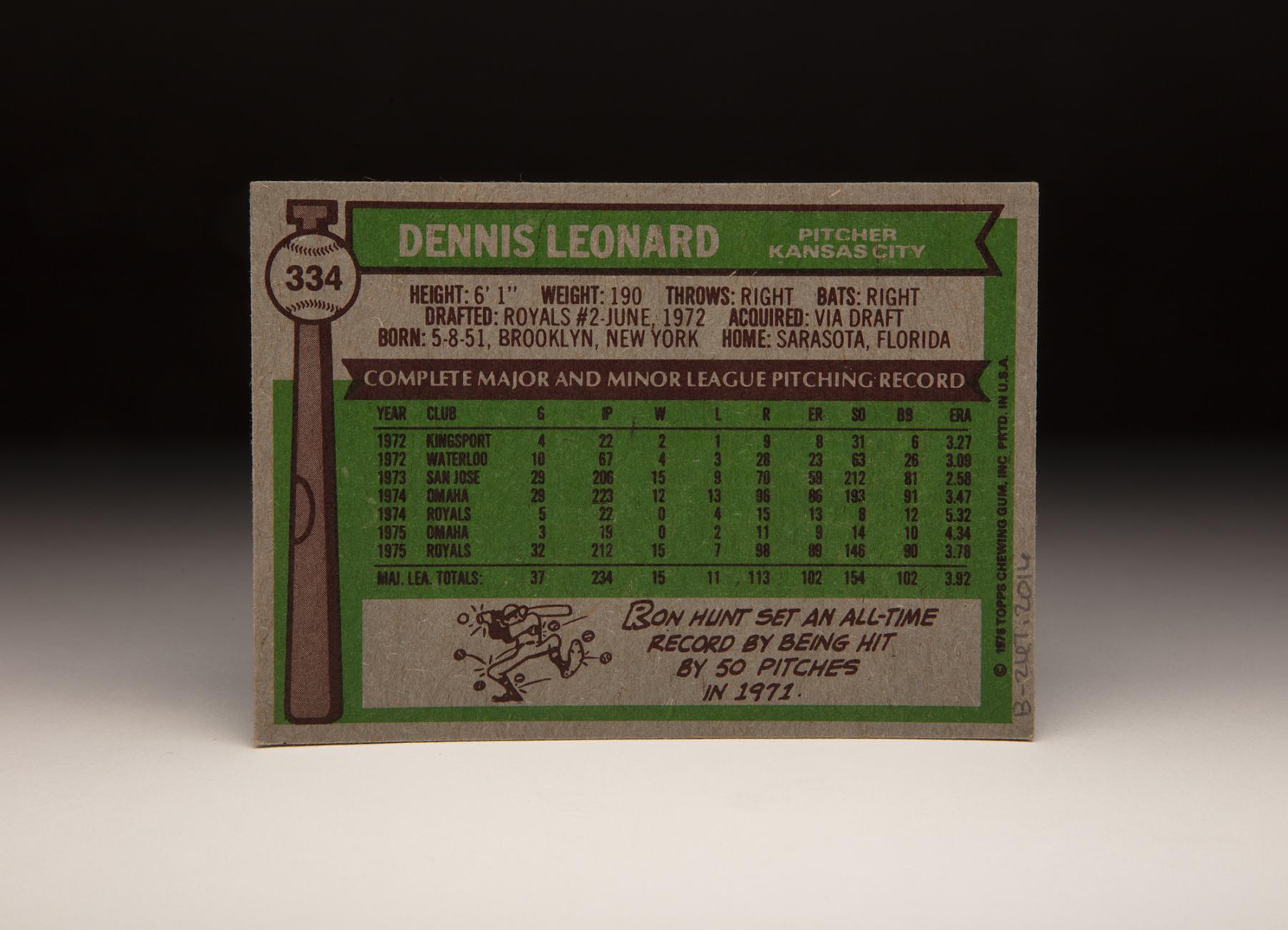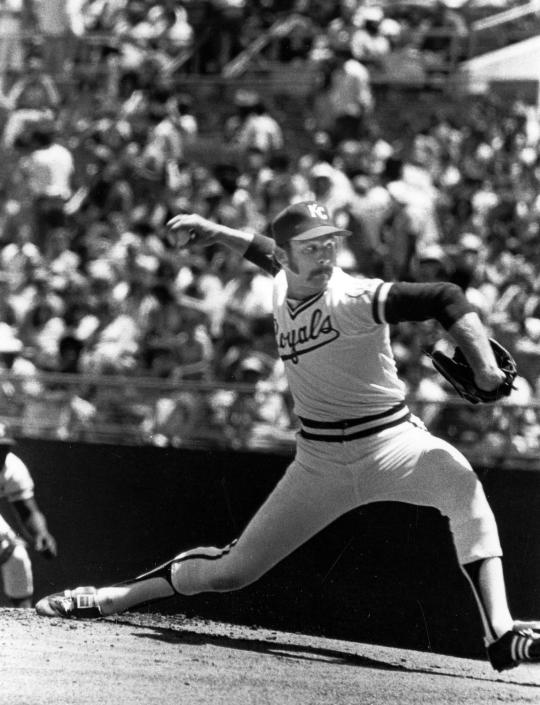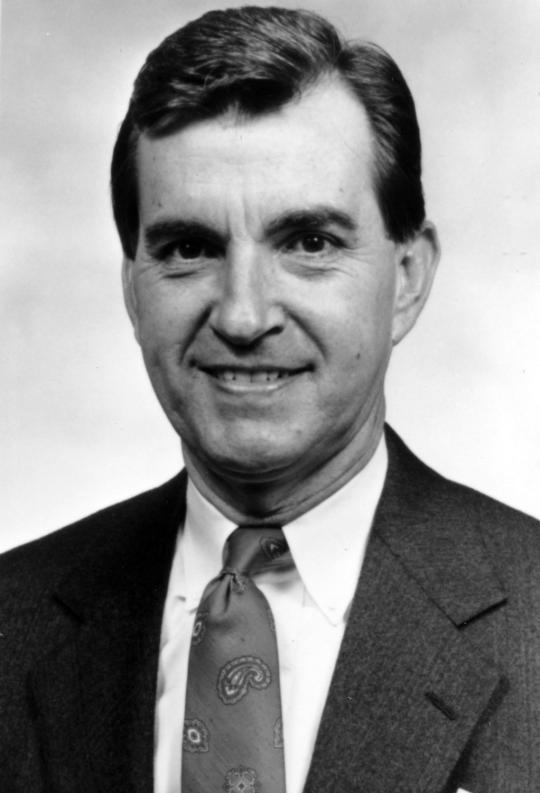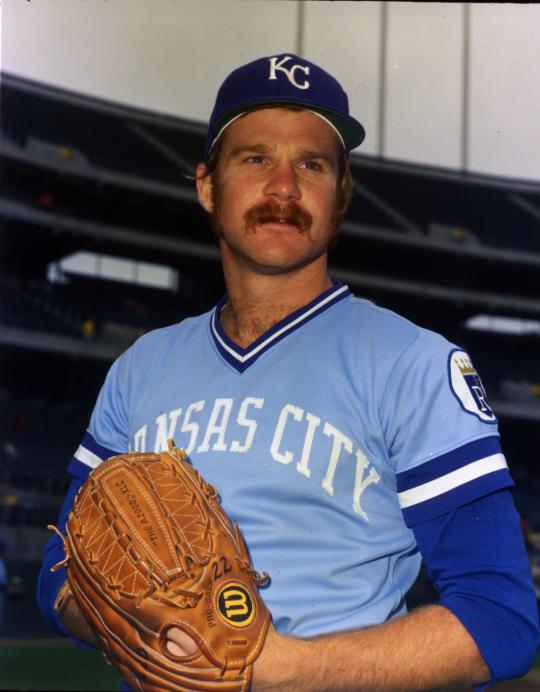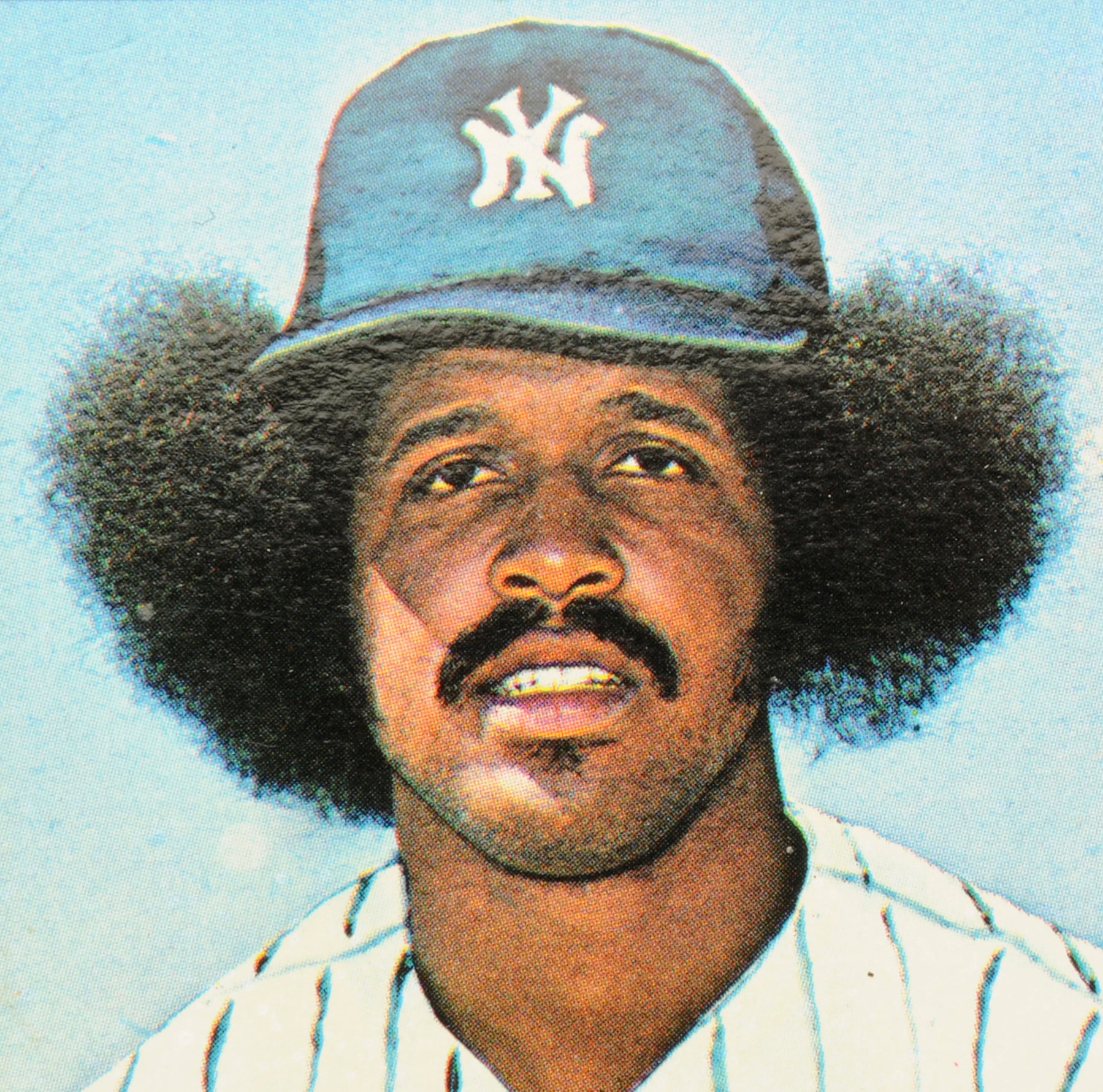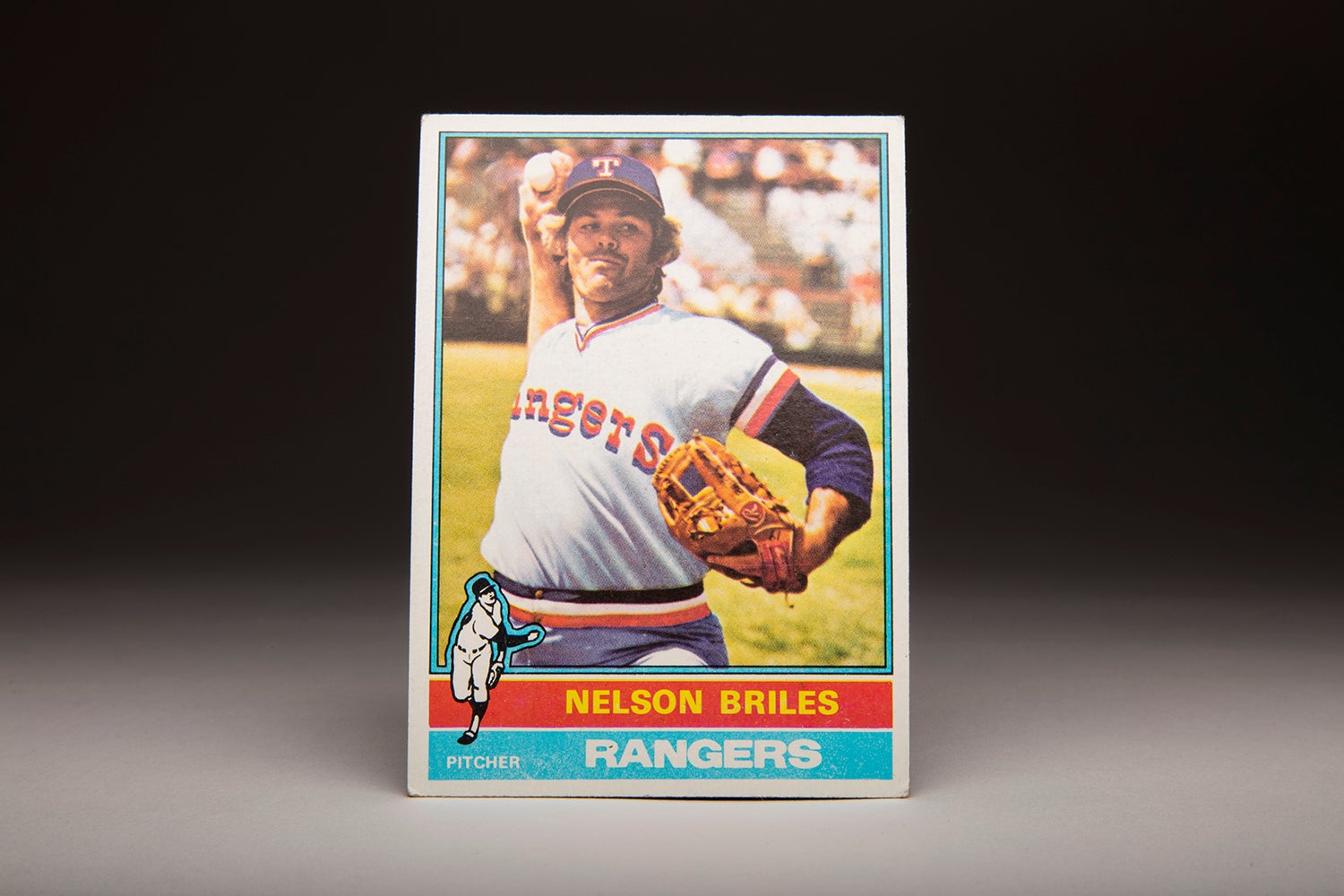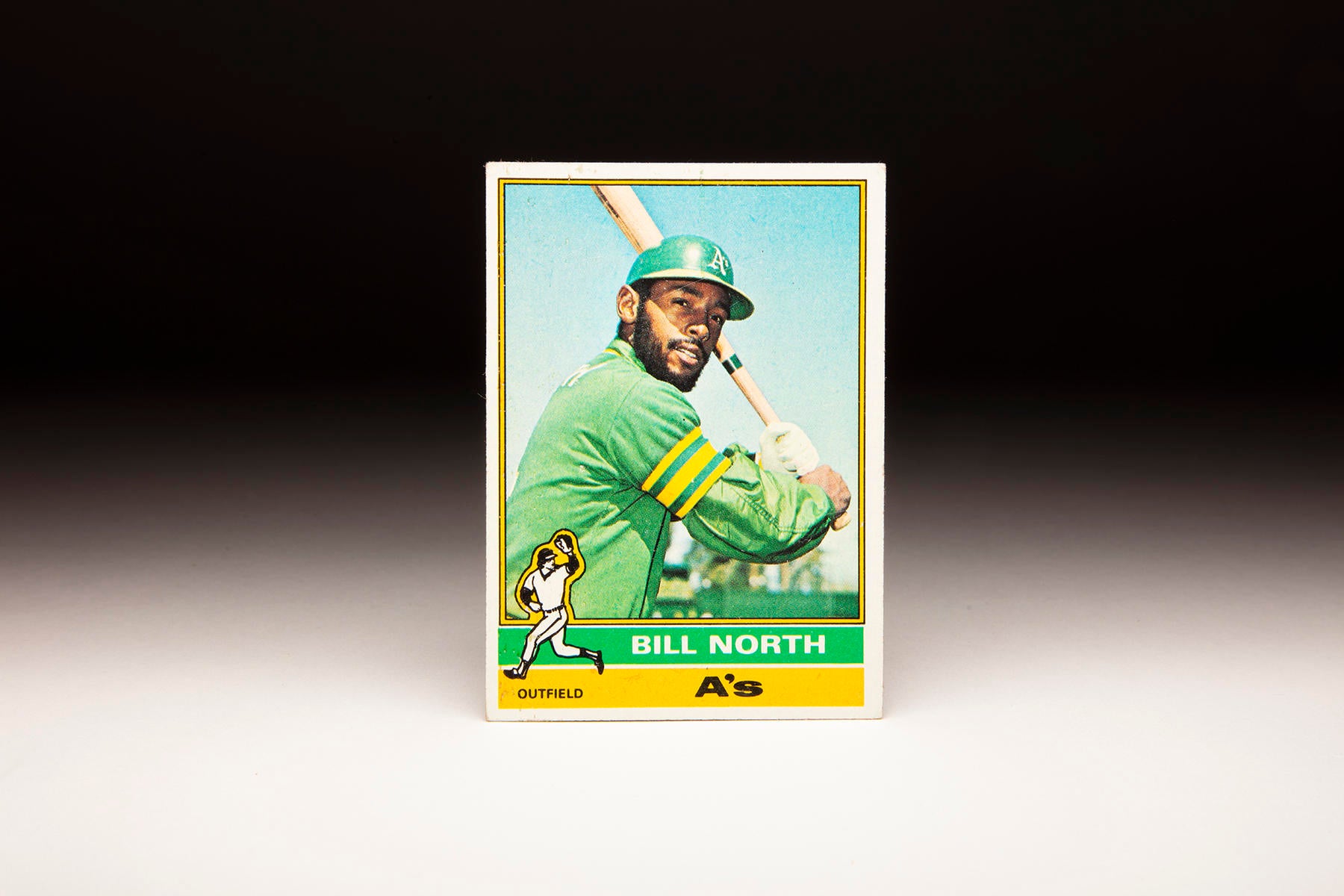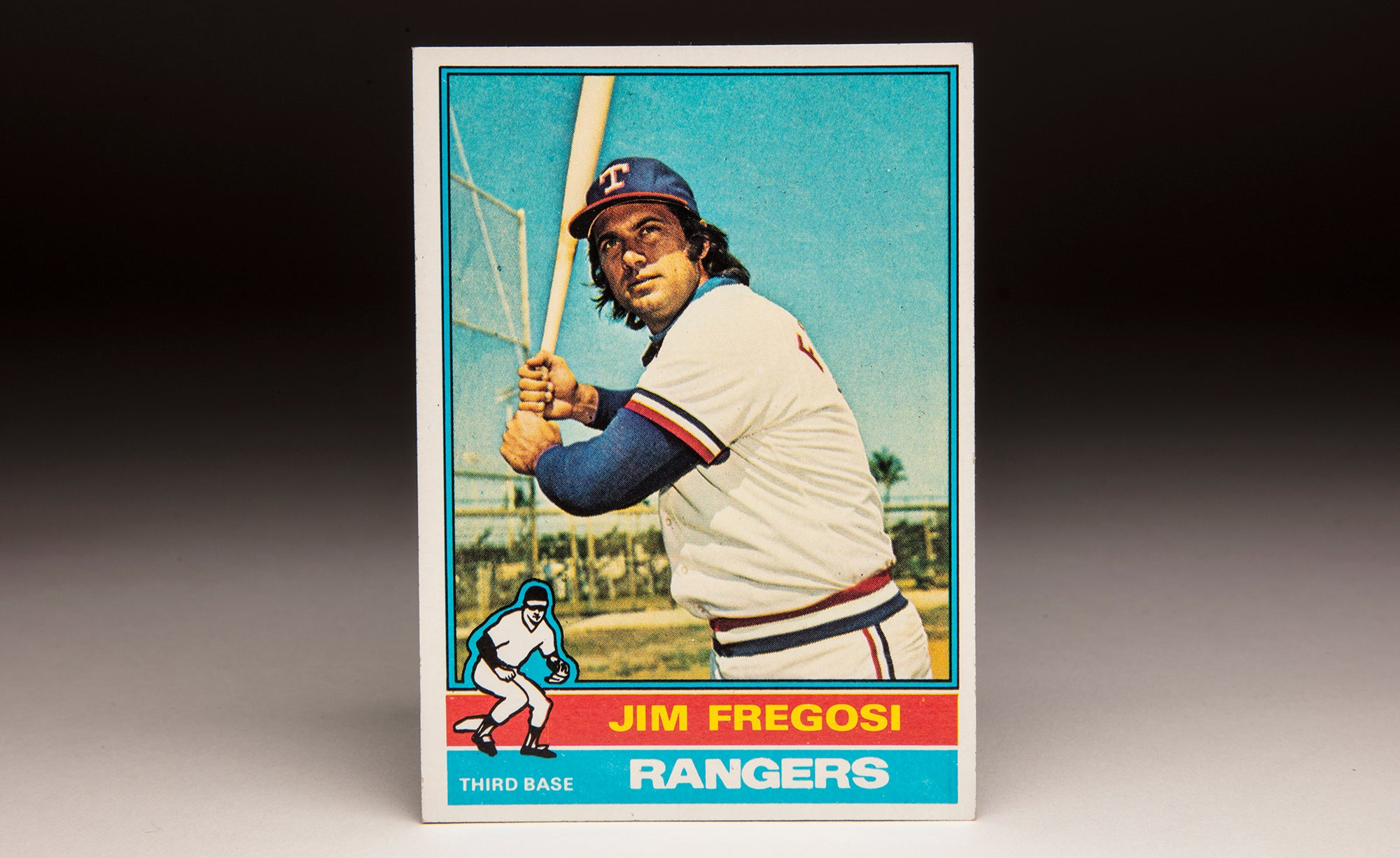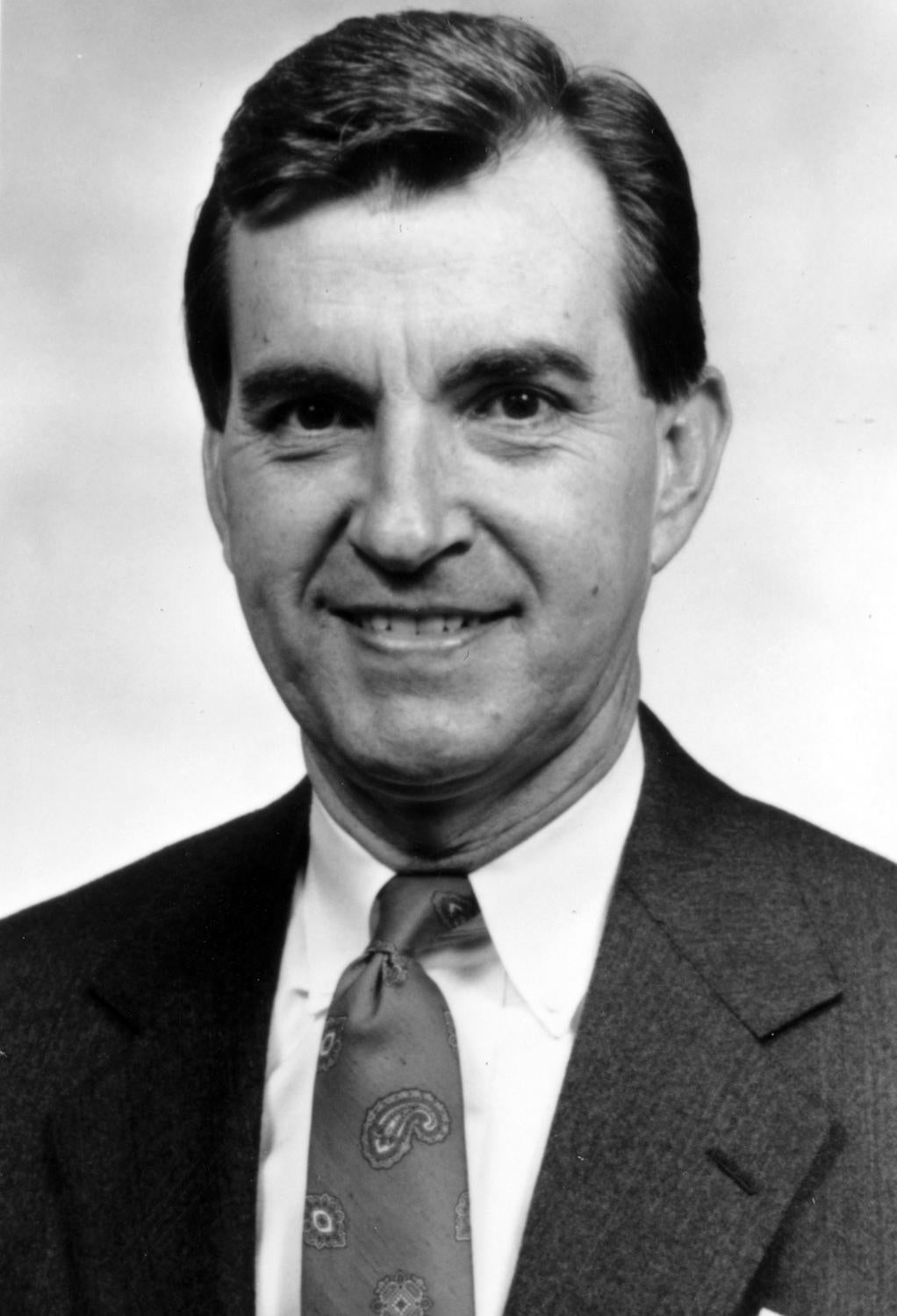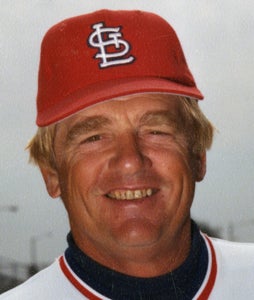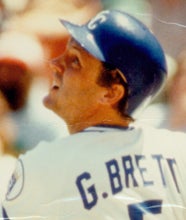- Home
- Our Stories
- #CardCorner: 1976 Topps Dennis Leonard
#CardCorner: 1976 Topps Dennis Leonard
In an age where starting pitchers were judged first and foremost by victories, Dennis Leonard seemed to have a patent on 20-win seasons.
And though an incredibly heavy workload limited his career to what amounted to nine full seasons, the Kansas City Royals’ ace left an indelible mark in the late 1970s and early 1980s.
Hall of Fame Membership
There is no simpler, and more essential, way to demonstrate your support than to sign on as a Museum Member.
Official Hall of Fame Apparel
Proceeds from online store purchases help support our mission to preserve baseball history. Thank you!
The workhorse of a Royals team that won five American League West titles in six seasons from 1976-81, Leonard was a product of the prolific Kansas City farm system of the early 1970s run by Lou Gorman and John Schuerholz. Born May 8, 1951, in Brooklyn and raised on Long Island, Leonard enrolled at Iona College and pitched for the Gaels, going 16-8 with 278 strikeouts in 220 innings over three seasons.
Following his junior season, Leonard was selected by the Royals in the second round (42nd overall pick) of the 1972 MLB Draft and sent Kingsport (Tenn.) in the Appalachian League.
The next year, Leonard was 15-9 with 212 strikeouts in 206 innings for Class A San Jose of the California League. Now on the fast track to the big leagues, Leonard went 12-13 with a 3.47 ERA for a Triple-A Omaha Royals team that went 54-82 in 1974.
“He’s aggressive,” Schuerholz told the Kansas City Star about Leonard in the summer of 1974. “His one drawback is that sometimes he tends to come up with his pitches.”
That tendency would remain when Leonard got to the big leagues and manifest itself in home runs from the opposition. But like many good pitchers of his generation, Leonard had the uncanny knack of limiting most of his home runs to solo shots.
Leonard debuted for the Royals on Sept. 4, 1974, and was 0-4 in five appearances in the season’s final month. He would not post another losing season for 11 years.
Gorman stated in the press that he expected Leonard to be a part of the Royals’ rotation in 1975, but Leonard was the team’s last cut in Spring Training and made three starts for Omaha in April, going 0-2 with a 4.26 ERA. But that did not dampen the Royals’ enthusiasm for their young pitcher – and when Lindy McDaniel was placed on the disabled list on May 2, the Royals recalled Leonard.
After a bumpy first few outings that left him with a 2-2 record and 4.42 ERA, Leonard settled in and began posting wins with regularity. Over his final 15 starts of the season, Leonard was 10-2 with four complete games and a 3.30 ERA. He finished the season with a 15-7 mark in 212.1 innings.
More importantly, the Royals had found an ace to go with a talented lineup that featured Amos Otis, Hal McRae and future Hall of Famer George Brett.
Leonard started Kansas City’s third game of the 1976 season and continued his winning ways, pitching Kansas City to victories with 10 innings of work on May 2, 10.2 innings on May 30 and 10 more innings on June 4. He finished the season with a 17-10 record and a 3.51 ERA in 259 innings, drawing starts in Games 2 and 5 of the ALCS vs. the Yankees after the Royals won their first AL West title with a 90-72 record. Leonard struggled in the postseason, working just 2.1 innings in Game 2 and failing to retire any of the three batters he faced in Game 5 – a game the Yankees won in the bottom of the ninth on Chris Chambliss’ walk-off home run.
But Leonard and the Royals were far from a one-year wonder.
Leonard went 20-12 in 1977 – leading the AL in wins and reaching the 20-win mark with a six-hit shutout of the Angels on the season’s final day.
He began the season 4-8, but dusted off the slider from his pitching repertoire – a pitch he had not thrown in years due to the pain it caused his elbow – and went 16-4 with a 2.35 ERA over his last 23 starts.
The Royals steamrolled to their second AL West title in as many seasons with a record of 102-60, and this time Leonard pitched well in the postseason – limiting the Yankees to four hits and one earned run over nine innings in a 3-2 win in Game 3. But with the Royals leading 3-2 heading to the ninth inning the decisive Game 5, manager Whitey Herzog turned to Leonard on one day of rest to get the final three outs.
Leonard allowed a single to Paul Blair to start the ninth and then walked Roy White, prompting Herzog to call on Larry Gura in relief. Gura allowed a single to Mickey Rivers to tie the game, and Mark Littell then surrendered a sacrifice fly to Willie Randolph with what proved to be the winning run in the Yankees’ 5-3 victory.
“I was just trying for strikes,” Leonard told the Fort Myers News-Press after being tagged with the loss. “When I was warming up I felt I had good stuff. But what can I say?”
Following the 1976 season, Leonard had signed a five-year, $1 million contract with the Royals. He finished fourth in the AL Cy Young Award voting in 1977 and even garnered some support in the AL Most Valuable Player voting.
Herzog named Leonard his Opening Day starter in 1978, and the Royals again won the AL West title – with Leonard going 21-17 over 40 starts and 294.2 innings.
The Royals again met the Yankees in the ALCS, and Leonard started Game 1, allowing nine hits and three runs over four innings in Kansas City’s 7-1 loss.
“It was the hardest he’s been hit all year,” Herzog told Gannett News Service after the game.
Leonard rebounded to allow only four hits and two runs over eight innings in Game 4, but the Yankees won 2-1 to clinch the series.
Leonard and the Royals had an off year in 1979, with Leonard going 14-12 with a 4.08 ERA and the Royals finishing three games behind the champion Angels in the AL West. But under new manager Jim Frey in 1980, Kansas City reclaimed its crown – with Leonard going 20-11 in a big league-best 38 starts.
This time, the Royals beat the Yankees in the ALCS, with Leonard winning Game 2 by allowing two runs over eight innings. Advancing to the World Series after sweeping New York, the Royals lost to Philadelphia in six games – with Leonard going 1-1 with a 6.75 ERA. Most of the damage against Leonard came in a Game 1 start where he allowed six runs in 3.2 innings, but he regrouped to permit just two earned runs over seven innings in a Game 4 win.
Leonard was his dependable self again in 1981, going 13-11 in an MLB-best 201.2 innings in the strike-shortened season. Kansas City won the second-half AL West title to again advance to the postseason, but was swept in the Division Series by the Athletics.
His five-year deal having expired, Leonard and the Royals agreed upon a new five-year contract worth $4 million. But in 1982, Leonard suffered two broken fingers on his right hand when he was hit by a line drive by the Rangers’ Buddy Bell on May 21. Leonard returned to the rotation was posted a 5-3 record down the stretch, matching the 5-3 record he had at the time of the injury. But the Royals finished three games behind the AL West champion Angels.
In 1983, Leonard again was struck by injury when he tore a tendon below his left kneecap in a May 28 start against the Orioles, necessitating surgery and ending his season after just 10 starts.
Another surgery followed and Leonard missed the entire 1984 season and most of 1985, making just two September one-inning relief appearances in a year the Royals eventually won their elusive World Series.
Leonard returned to the Royals rotation in 1986, throwing a three-hit shutout against the Blue Jays in his first start of the season on April 12. He was a respectable 8-13 with a 4.44 ERA in 30 starts that year. But with his contract up, Leonard called it a career.
In 12 seasons, Leonard was 144-106 with 103 complete games, 23 shutouts and a 3.70 ERA. From 1976-80, the 6-foot-1, 190 right-hander averaged 18 wins and 273 innings pitched per season.
With a few different bounces of the ball, the Kansas City team of the late 1970s might have been considered a dynasty. But even without multiple titles, Dennis Leonard and the Royals proved they were indeed champions.
Craig Muder is the director of communications for the National Baseball Hall of Fame and Museum

